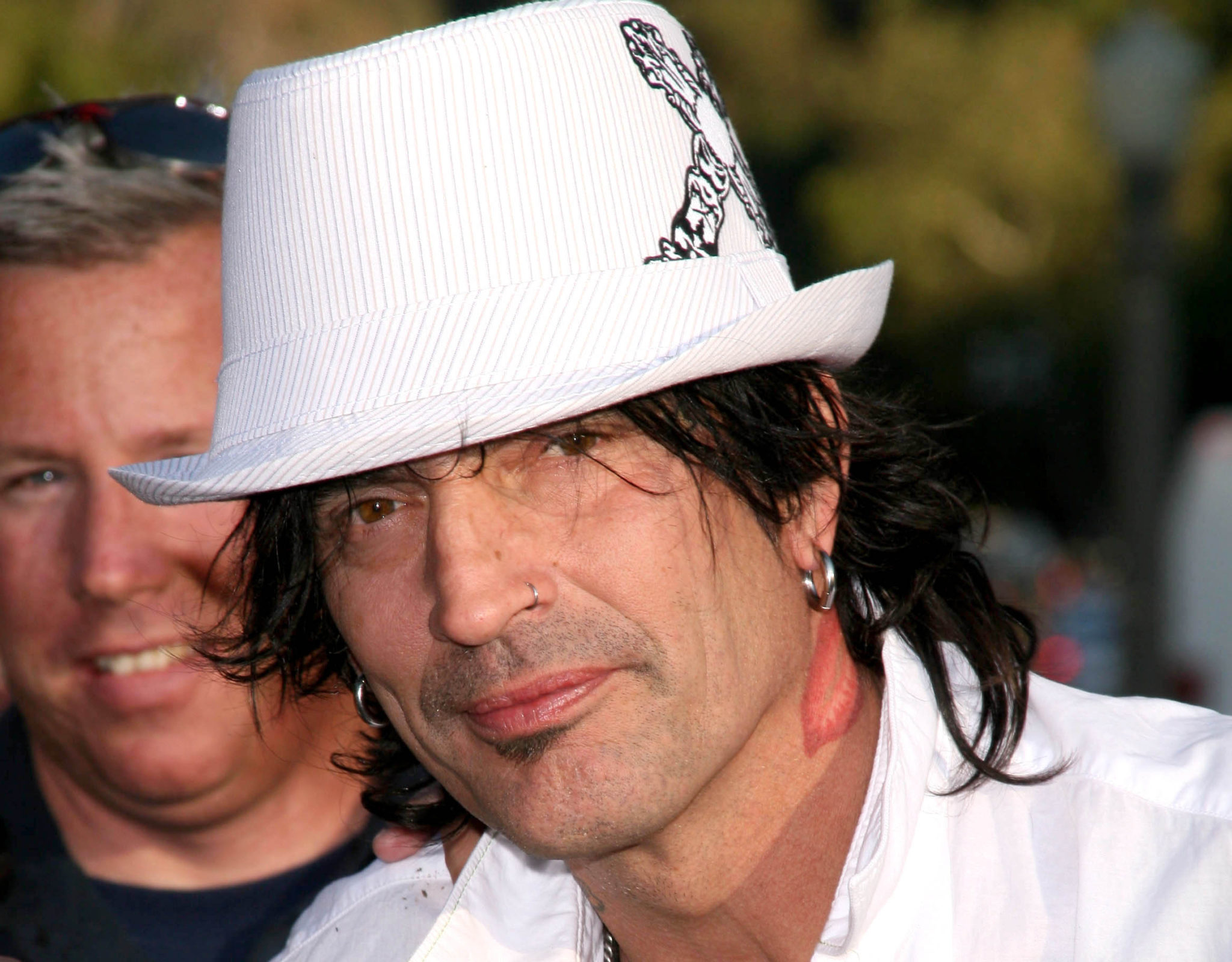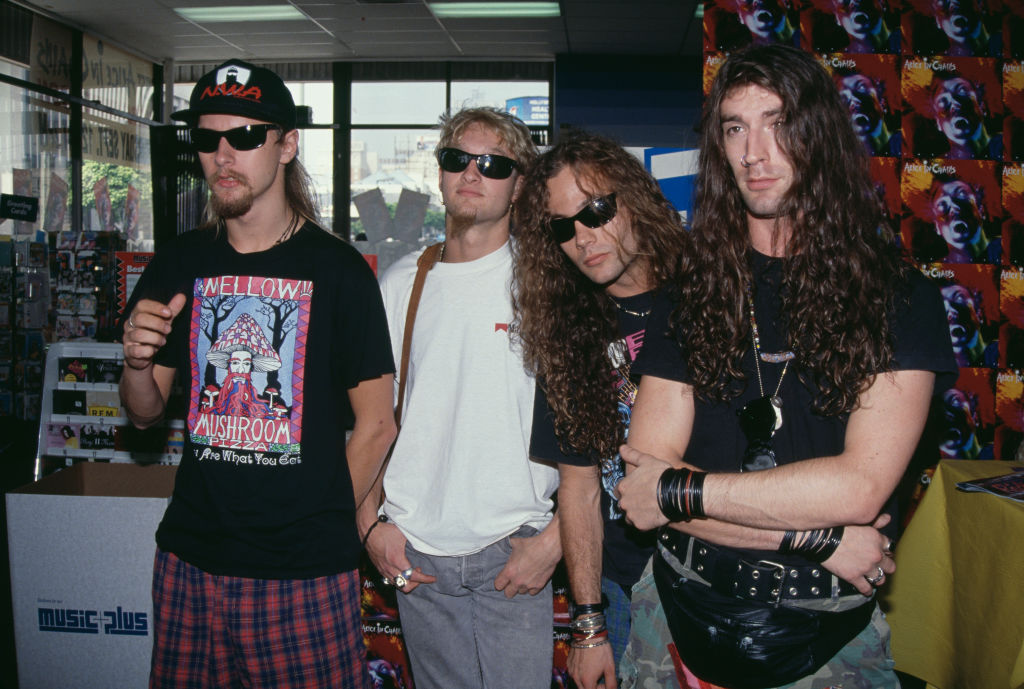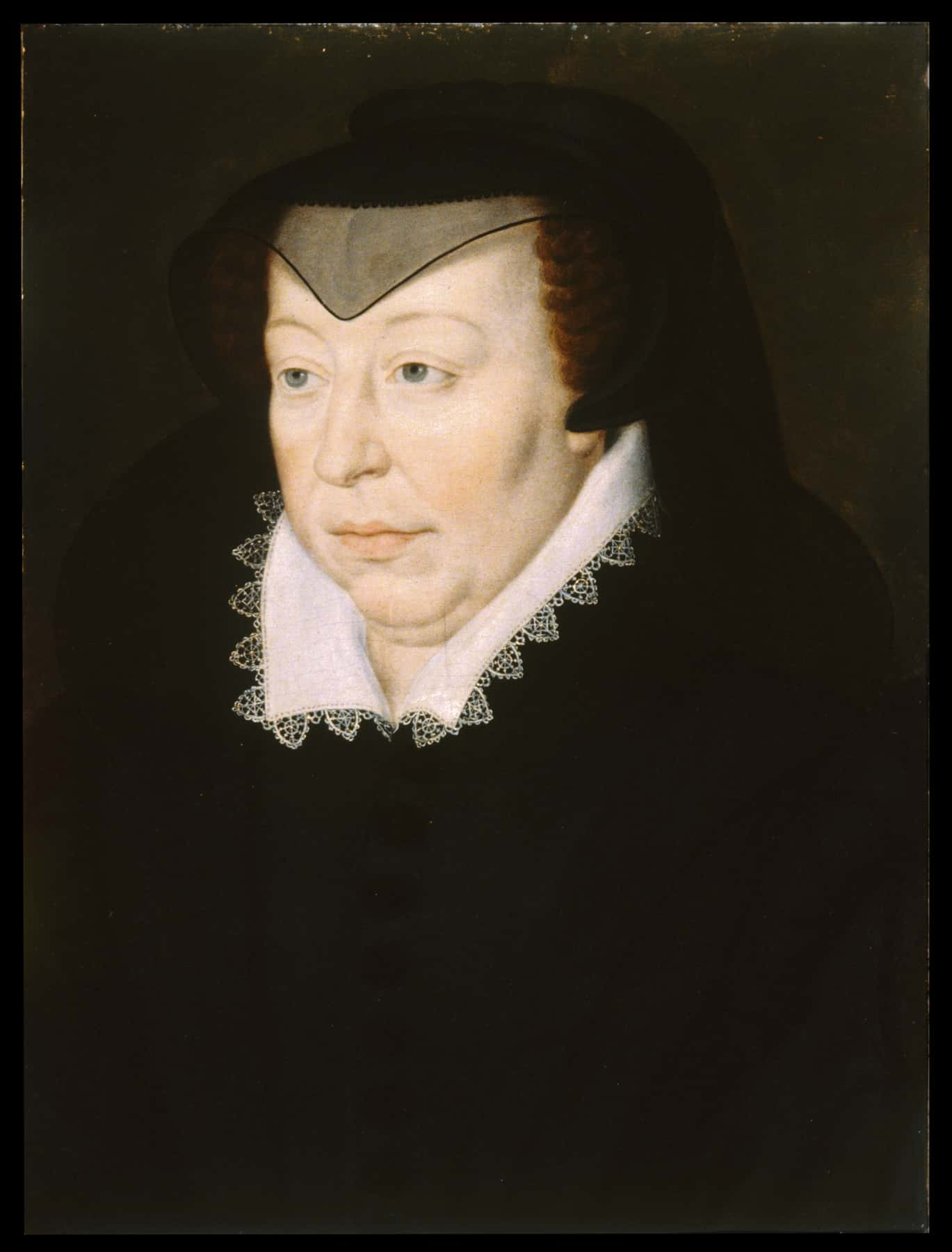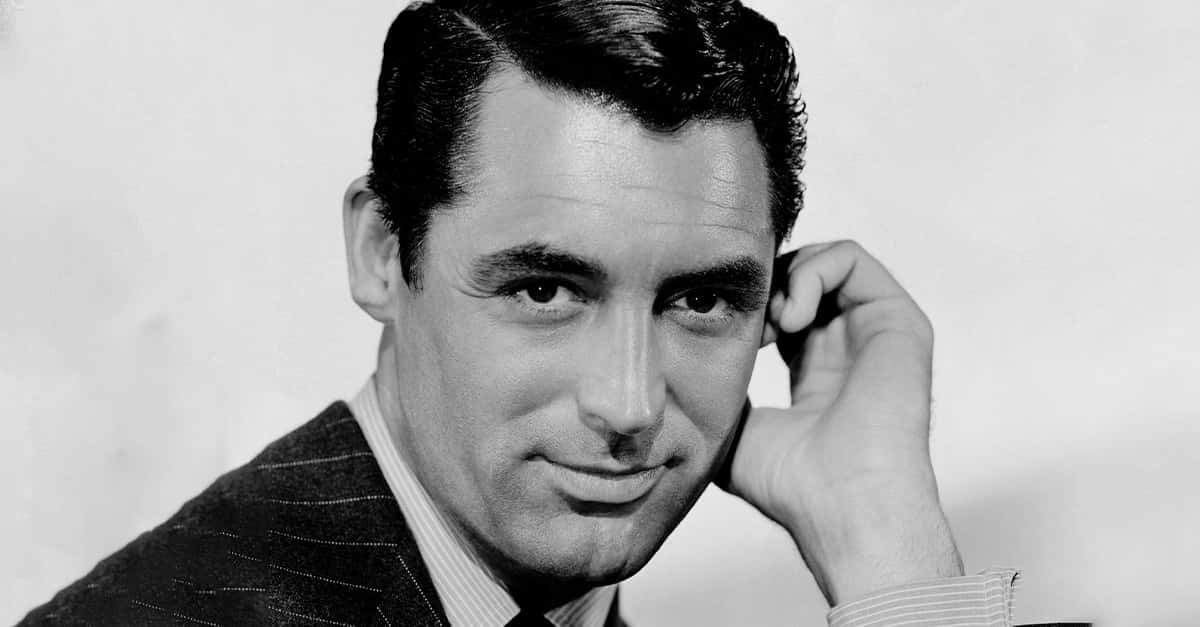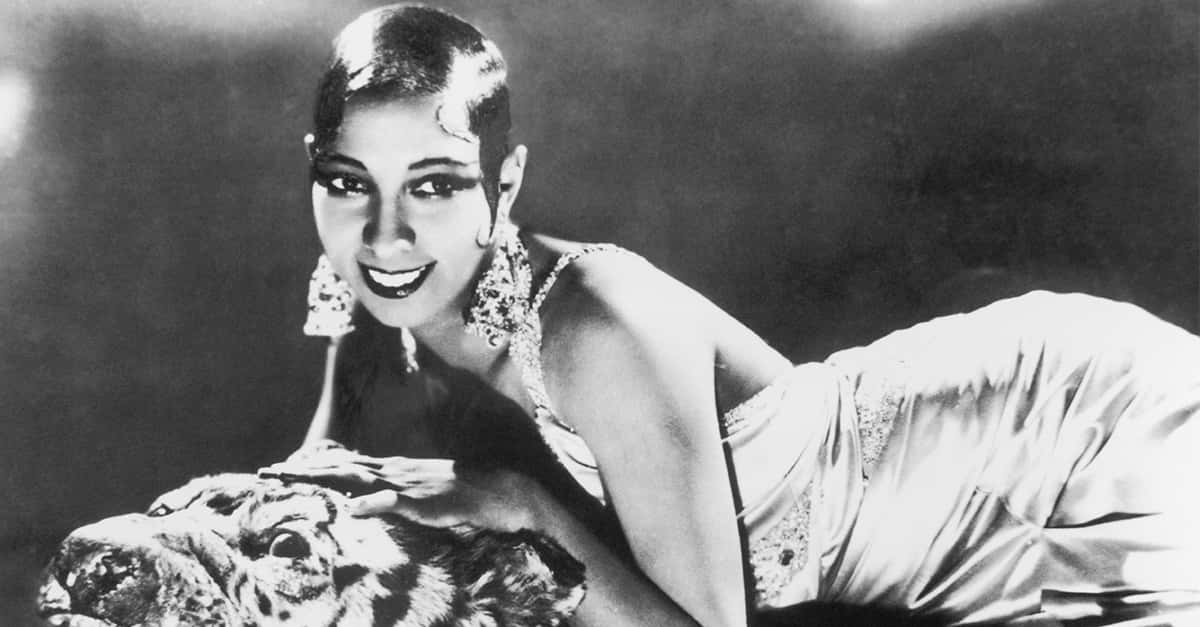A Life Of Talent And Struggle
Layne Staley has been recognized by many sources as one of the most talented and unique voices of 90s grunge; he has also been memorialized and honored by many of his fellow musicians. Despite his talent, Staley spent much of his life haunted by demons. Although he ultimately succumbed to them, what fans and those who love him remember is his talented and beautiful soul. Let’s dive into the beauty and tragedy of Layne Staley's life.

1. He Was Named For Family
Staley’s birth was much like any other. He was born on August 22nd, 1967, in Bellevue, Washington, to Philip “Phil” and Nancy Staley. His parents christened him Layne Rutherford Staley. While they named him after his mother, whose maiden name was Layne, it wouldn’t be long before there were problems. As he grew, Layne was not happy.
2. He Was Emotional
Even as a child, Layne Staley did not feel things in half. Staley hated this middle name, Rutherford, responding with anger whenever people called him by it. By the time he was a teenager, he legally changed his middle name to “Thomas”, after Mötley Crüe’s drummer Tommy Lee. Staley’s passion for music would shape his life.
3. He Knew What He Wanted
While other children struggled to find themselves, Staley knew what he wanted to do with his life early on. At two or three years old, he was the youngest member of his local rhythm band. At the age of nine, he wrote in his Dr Seuss book, All About Me, that he wanted to be a singer.
Other children often lose their childhood dreams, but Staley wasn’t like other children.
 Man In The Box - The Alice In Chains Story, RAWMUSICTV
Man In The Box - The Alice In Chains Story, RAWMUSICTV
4. He Took After His Parents
Staley came by his passion for rock and metal music honestly. It was his parent’s music collection that shaped his early music tastes. Staley considered Black Sabbath as his first influence, though he listened to bands from the familiar such as Twisted Sister and the Stooges, to the more obscure like Ministry and Skinny Puppy. It wouldn’t last, however.
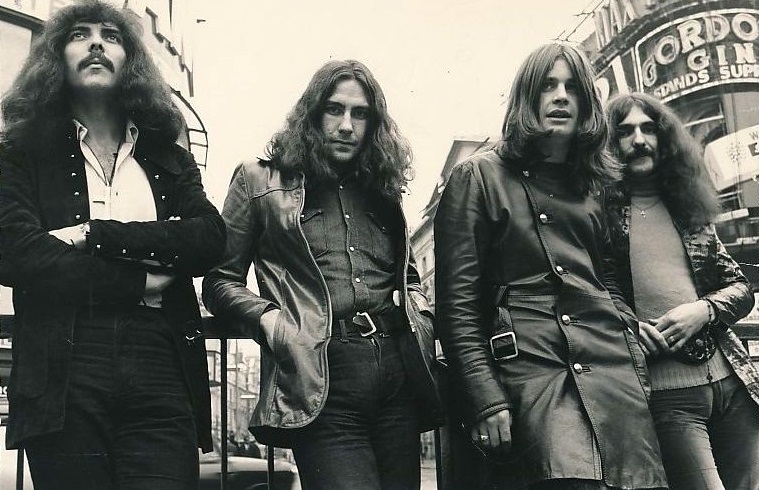 Vertigo Records, Wikimedia Commons
Vertigo Records, Wikimedia Commons
5. He Came From A Broken Family
As Layne Staley grew older, his life became rocky. His parents’ relationship could no longer survive its growing tension. By the time that Staley was seven, they had divorced. From this point, Staley was raised by his mother, and stepfather, Jim Elmer.
During his high school years, he took his stepfather’s last name, enrolling as Layne Elmer. Without this marriage, Staley’s life might never have been the same.
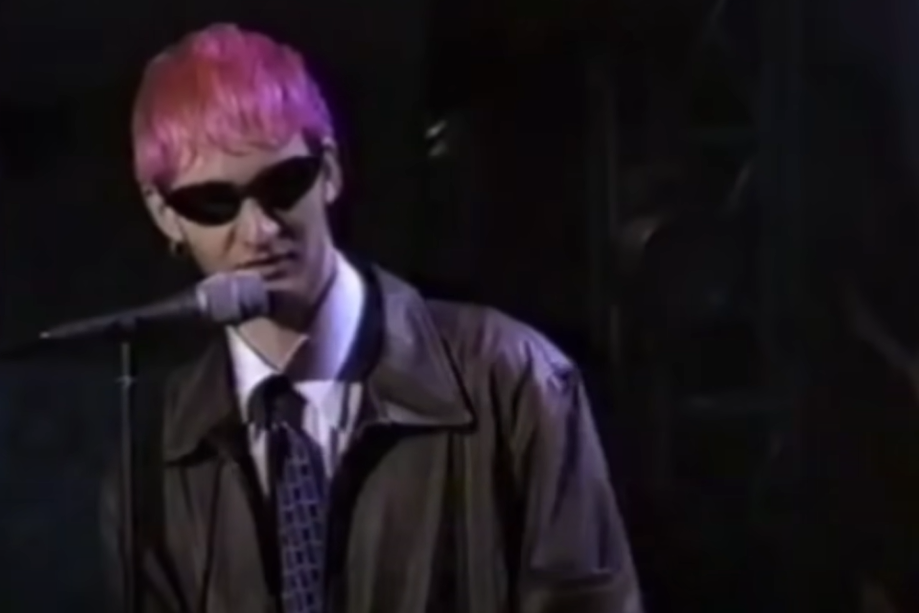 The Dark Descent Of Layne Staley (2021 Documentary), RockRealmm
The Dark Descent Of Layne Staley (2021 Documentary), RockRealmm
6. He Held Himself Back
Music remained a part of Staley’s life, though he struggled to find his focus. At the age of 12, was playing drums and joining glam bands. Still, there was a voice in the back of his mind that continued to whisper his true passion: singing. However, he was holding himself back. He needed a little push to become who he was meant to be.
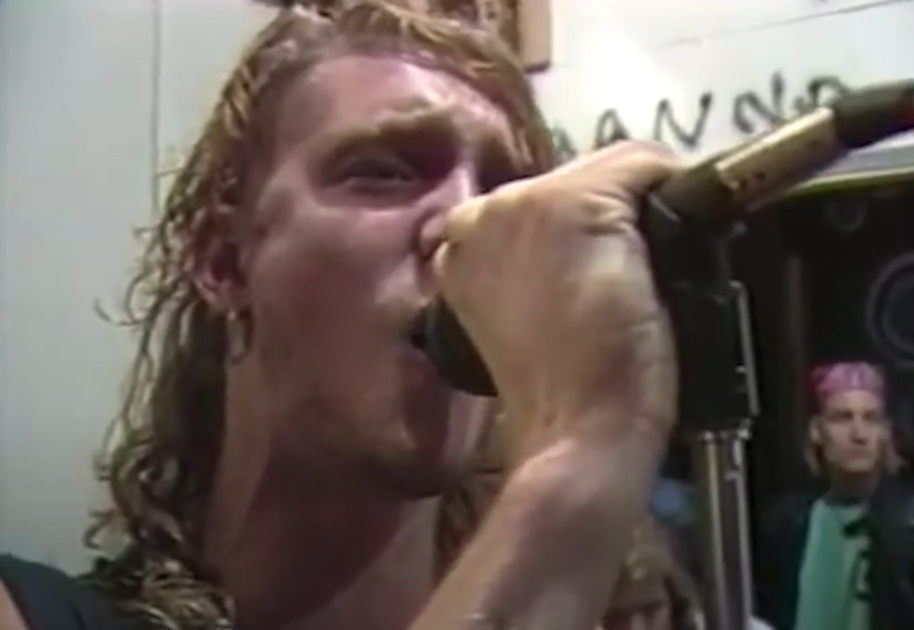 Man In The Box - The Alice In Chains Story, RAWMUSICTV
Man In The Box - The Alice In Chains Story, RAWMUSICTV
7. He Almost Let It Slip Away
Staley almost missed the opportunity that started him on his road to success. In 1984, three students from Shorewood High School, James Bergstrom, Johnny Bacolas, and Zoli Semanate, were starting a band: Sleze. They had two guitarists and a drummer, but they needed a singer. Staley was waiting in the wings, if someone was willing to give him the push.
 Man In The Box - The Alice In Chains Story, RAWMUSICTV
Man In The Box - The Alice In Chains Story, RAWMUSICTV
8. His Family Saved Him
It was Staley’s stepbrother, Ken Elmer, who got Staley the audition for Sleze. Knowing his stepbrother’s ambitions, Elmer mentioned to Sleze’s drummer James Bergstrom, that Staley was a singer. However, he almost didn’t go to the audition, telling his mother, “Well, I’m no singer”. Trouble was brewing for not just Staley’s future, but Sleze’s as well.
 Sourcearchive, Wikimedia Commons
Sourcearchive, Wikimedia Commons

History's most fascinating stories and darkest secrets, delivered to your inbox daily.
9. He Was A Rare Talent
Despite Layne Staley being exceptionally timid during this audition, he blew the founding members of Sleze away. Bacolas recalled, “the grain of his voice was there, the soul was there”, expanding further to say, “I don’t know what we were looking for. We just kind of—we just kind of found it”. Sleze, and more importantly Staley, were on their way.
 Man In The Box - The Alice In Chains Story, RAWMUSICTV
Man In The Box - The Alice In Chains Story, RAWMUSICTV
10. He Had Early Success
Most bands struggle to get off of the ground. Sleze, however, had something special—they had Staley. With Sleze, Staley had modest success, signing with a local record company, and even appearing in a small low-budget movie, Father Rock. The cameo on Father Rock appeared on Seattle’s Public Access Channel in 1985. Despite all this, Sleze was constantly in flux.
 Man In The Box - The Alice In Chains Story, RAWMUSICTV
Man In The Box - The Alice In Chains Story, RAWMUSICTV
11. He Was The One Constant
As was often the case with burgeoning bands, the lineup of Sleze was constantly in flux. Founding member Zoli Semanate left entirely. Johnny Bacolas briefly left to play with a different band, so Staley invited his friend Nick Pollock in. It would seem impossible for a band to survive this much change, yet through it all Staley remained, holding it together.
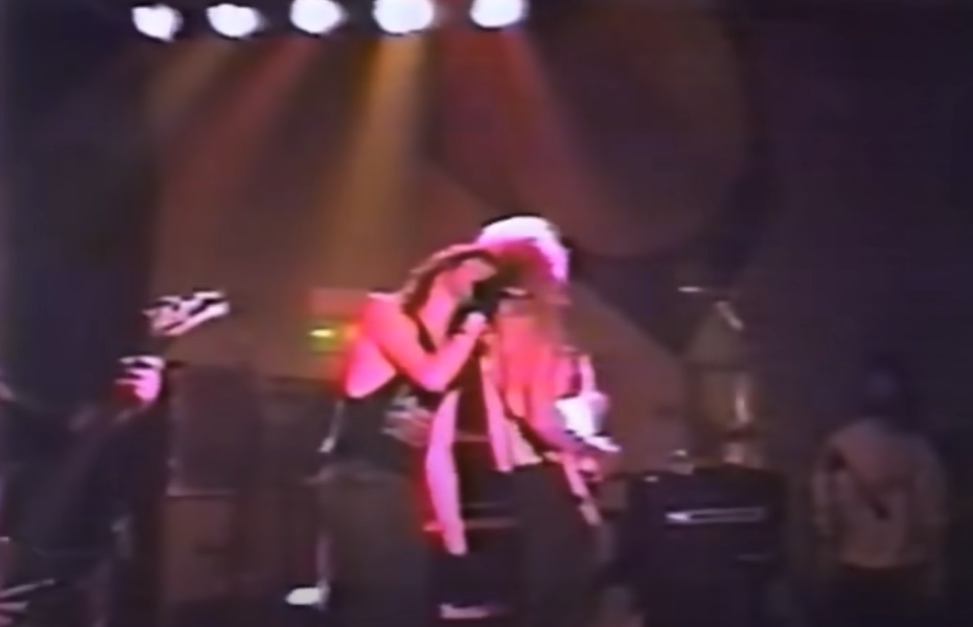 The Dark Descent Of Layne Staley (2021 Documentary), RockRealmm
The Dark Descent Of Layne Staley (2021 Documentary), RockRealmm
12. He Survived Change
By 1986, Bacolas returned from his stint playing with Ascendant, though Sleze looked quite different than it had before. Bacolas, how playing bass, rounded out Sleze to a quartet that consisted of himself, Staley, Bergstrom, and Pollock. They were locked in musically. However, Bacolas also brought a new dilemma. He was no longer in love with the name Sleze; he wanted something different.
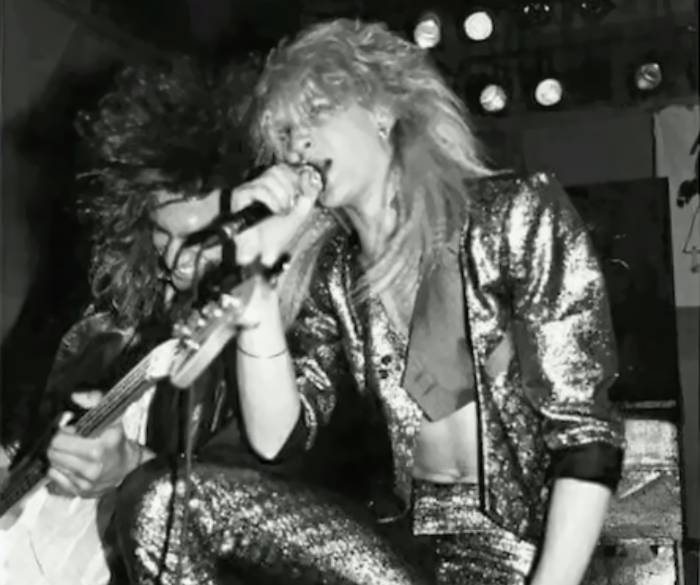 Unknown Author, Wikimedia Commons
Unknown Author, Wikimedia Commons
13. He Courted Controversy
Bacolas had been having a conversation with another artist, Russ Klatt from Slaughter Haus 5, that had led to inspiration. They had started their conversation talking about a “Wonderland Tour”, which lead them to Alice in Wonderland, which finally lead Bacalos to his ultimate brainstorm: Alice in Chains. Bacloas and the band loved this name, but others did not.
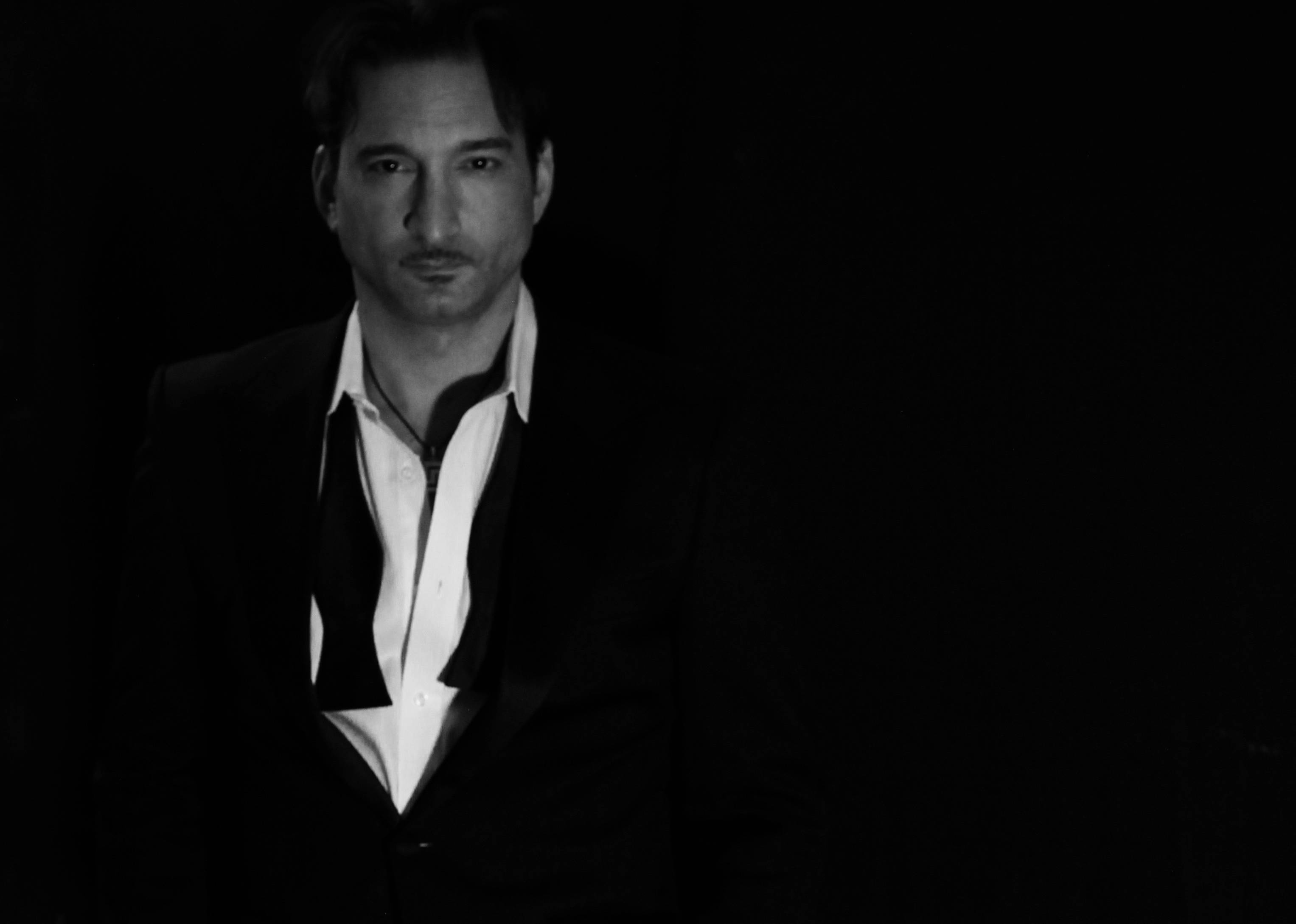 Teal blue lights, CC BY-SA 4.0, Wikimedia Commons
Teal blue lights, CC BY-SA 4.0, Wikimedia Commons
14. He Disagreed With His Family
There was a problem with Alice in Chains, and even Bacolas could see it. He fully admits that “Alice in Chains” came from an idea of putting the fictional Alice in chains, which caused problems with the young band’s family members, particularly Staley’s mother, Nancy McCallum. This might not have been a problem except Staley was in direct opposition to his mother.
17. He Had A Unique Sense of Humour
The fact was that Layne Staley liked the name “Alice in Chains”. He liked it a lot, and he didn’t see it as a problem. To Staley, the band was about dressing in drag, and playing metal music; “Alice in Chains” played into that image. To Staley it was all a fun joke, but to others it held heavy offense. In the end, the band would have to agree to a compromise.
 The Dark Descent Of Layne Staley (2021 Documentary), RockRealmm
The Dark Descent Of Layne Staley (2021 Documentary), RockRealmm
15. He Learned To Compromise
If the problem was that “Alice in Chains” alluded itself to something unsavory, then the band would simply hide the allusion in amongst the words. They settled on changing the name of the band from “Alice in Chains” to “Alice ‘N Chains”. According to Bacolas, this compromise worked for it made it sound more like “Alice and Chains”, which lessened the unsavory allusion that caused offense. Yet, it didn’t appease everybody.
 Dirtumentary: The Story of Alice In Chains (The Layne Years) Documentary, JG Documentaries
Dirtumentary: The Story of Alice In Chains (The Layne Years) Documentary, JG Documentaries
16. He Almost Ruined His Relationship
McCallum still felt the illusion of a woman in chains would alienate her son’s female audience. McCallum’s opinion would not change, nor would Staley’s. It concerned and offended McCallum that Staley did not see a problem with the name. She asked herself, “How could my child possibly choose a name like 'Alice ‘N Chains”?
They didn’t speak for almost two weeks, a first in their relationship. Yet, life went on, and Staley’s next step was around the corner.
 Dirtumentary: The Story of Alice In Chains (The Layne Years) Documentary, JG Documentaries
Dirtumentary: The Story of Alice In Chains (The Layne Years) Documentary, JG Documentaries
18. He Was Inspiring
There was someone waiting just around the corner for Staley, though he’d yet to realize it. Jerry Cantrell, a guitarist playing for a band called Diamond Lie, was mourning the loss of his mother only three weeks prior when he had gone to a concert in April 1987 for a band called Alice ‘N Chains.
He was impressed by the raw, deep voice of its lead singer: Layne Staley. Neither Cantrell nor Staley realized what was being put into motion.
 Man In The Box - The Alice In Chains Story, RAWMUSICTV
Man In The Box - The Alice In Chains Story, RAWMUSICTV
19. His Life Changed By Chance
Things might never have changed it Cantrell didn’t face adversity of his own. In July of that same year, Diamond Lie played their last concert, and Cantrell was once again without a gig, and more importantly without a home. That’s when fate worked its strange magic. Cantrell and Staley met in August of 1987 at a party in Seattle. The pair quickly kicked off a relationship that would change the course of both their lives.
 Man In The Box - The Alice In Chains Story, RAWMUSICTV
Man In The Box - The Alice In Chains Story, RAWMUSICTV
20. He Was Generous
Layne Staley was a kind person who helped others when he could. At this point in his life, Staley was working at the Music Bank. He was also living there. Upon hearing that Cantrell had been kicked out of his family’s house, Staley wouldn’t hear of it. He invited Cantrell to join him there.
For over a year, the pair lived in a dilapidated rehearsal space. It was here that magic happened.
 Rex Aran Emrick, CC BY-SA 3.0, Wikimedia Commons
Rex Aran Emrick, CC BY-SA 3.0, Wikimedia Commons
21. His Band Fell Apart
Cantrell and Staley were nothing but roommates at this point in their lives. However, that was about to change. Although Alice ‘N Chains saw modest success, playing locally and recording two demos in 1987 they did not last. By the end of 1987, the band had gone separate ways.
Bacolas and Bergstrom would go on to form their bands, but Cantrell had his eyes on Staley.
 Rex Aran Emrick, CC BY-SA 3.0, Wikimedia Commons
Rex Aran Emrick, CC BY-SA 3.0, Wikimedia Commons
22. He Was Desirable
Cantrell hadn’t sat by idly when Diamond Lie fell apart. He’d been collecting musicians that he’d admired to craft a new band, one that would exceed all expectations. He’d pulled in Sean Kinney for drums quickly enough, and through an ironic twist of fate, got exactly who he wanted for bass: Mike Starr. However, they still needed a singer, and there was only one Cantrell wanted: Staley.
 Dirtumentary: The Story of Alice In Chains (The Layne Years) Documentary, JG Documentaries
Dirtumentary: The Story of Alice In Chains (The Layne Years) Documentary, JG Documentaries
23. He Was One Of A Kind
Cantrell had never forgotten the sound of Staley’s voice from the first time he’d seen him perform. The deepness of Staley’s voice, despite his slight frame continued to impress Cantrell. He knew, “that voice was the guy [he] wanted to be playing with”. There was just one problem.
Staley wasn’t interested in working with Cantrell. He had projects of his own.
 momentcaptured1, CC BY 2.0, Wikimedia Commons
momentcaptured1, CC BY 2.0, Wikimedia Commons
24. He Learned to Adapt
Layne Staley hadn’t sat by when Alice ‘N Chains disbanded. He had gotten on with his life and immediately joined another project. This time it was with a funk band that had yet to develop a name. He was excited for Cantrell, as a friend, to succeed with his own band, but Staley was focused on this funk band. He didn’t want to split his time.
Cantrell, however, had a plan.
 Rex Aran Emrick, CC BY-SA 3.0, Wikimedia Commons
Rex Aran Emrick, CC BY-SA 3.0, Wikimedia Commons
25. He Came Under Pressure
How, you might ask, did Cantrell convince Staley to do something he didn’t wat to do? Well, remember, at this time, Cantrell and Staley shared a home, and it was a home that also doubled as a rehearsal space. Cantrell began to hold auditions for his band’s lead singer in front of Staley—every single one of them was terrible. Still, Staley resisted.
 Dirtumentary: The Story of Alice In Chains (The Layne Years) Documentary, JG Documentaries
Dirtumentary: The Story of Alice In Chains (The Layne Years) Documentary, JG Documentaries
26. He Reached His Breaking Point
Layne Staley may have been stubborn, but Cantrell was more so. He kept pushing until there was something Staley couldn’t ignore. Then came the final straw: The male stripper. When Cantrell auditioned a male stripper in front of him, Staley finally caved and agreed to join Cantrell’s developing band. However, Staley had one condition of his own.
27. He Hedged His Bets
Staley’s funk band needed a guitarist. He agreed to join Cantrell’s band as a singer on the condition that Cantrell would join his project as a guitarist. A deal was struck, and Cantrell came out ahead. By the end of 1987, Staley’s funk project fell through, and Cantrell’s band became his full focus.
 Man In The Box - The Alice In Chains Story, RAWMUSICTV
Man In The Box - The Alice In Chains Story, RAWMUSICTV
28. He Looked To The Past
Now Staley and the band were rocking. However, they struggled to settle on a name. In their early stages, this new band played under a plethora of names, including that of Cantrell’s previous band, Diamond Lie. Eventually, they began discussing adopting the original name that Staley’s name had wanted to use: Alice in Chains.
To do so, however, he needed permission.
 The Dark Descent Of Layne Staley (2021 Documentary), RockRealmm
The Dark Descent Of Layne Staley (2021 Documentary), RockRealmm
29. He Almost Lost What He Wanted
Staley, it seemed, never forgot that original name his first band had come up with. Alice ‘N Chains had disbanded on good terms, and Staley wanted to keep it that way. He reached out to his old band to ask permission to use “Alice in Chains”. Although Nick Pollock initially didn’t love the idea, he eventually came around. Alice in Chains were off, or so they thought.
 Man In The Box - The Alice In Chains Story, RAWMUSICTV
Man In The Box - The Alice In Chains Story, RAWMUSICTV
30. He Had Terrible Luck
It was local promoter, Randy Hauser, who gave Staley and Alice in Chains got their big break. Noticing the band’s talent, Hauser offered to pay for the group to make demo recordings. However, the day before they were set to record, disaster struck.
The authorities shut down the studio in the biggest cannabis raid in the history of the state. Was Alice in Chains going to end before it started?
 Man In The Box - The Alice In Chains Story, RAWMUSICTV
Man In The Box - The Alice In Chains Story, RAWMUSICTV
31. He Was On His Way
Things were looking dire for Alice in Chains. However, they hadn’t worked this hard simply to give up at the first sign of trouble. Despite adversity, Alice in Chains managed to complete their final demo by 1988, named The Treehouse Tapes. The Treehouse Tapes found their way to Columba Records’ representative, Nick Terzo, who signed them in 1989. They were on their way, and so was Staley.
 The Dark Descent Of Layne Staley (2021 Documentary), RockRealmm
The Dark Descent Of Layne Staley (2021 Documentary), RockRealmm
32. He Found A Match
While all of this was happening for Alice in Chains, Staley’s personal life was also beginning to blossom. In the spring or summer of 1988, Staley met Demri Parrott, a model and minor actress who was working in a shop called Saturdays.
They quickly began a relationship, changing Staley’s life forever.
 Man In The Box - The Alice In Chains Story, RAWMUSICTV
Man In The Box - The Alice In Chains Story, RAWMUSICTV
33. His Demons Came Out
Quotes by many close friends and bandmates of Staley and Parrott state that the pair were perfect for each other, some even using the term “soulmates”—but there was a dark side to the romance. Their demons, certainly, matched each other.
Parrott and Staley both became dependent on their addictions. Staley would struggle to cope with his for years.
 NBC, Late Night with David Letterman (1982-1993)
NBC, Late Night with David Letterman (1982-1993)
34. His Success Was Rising
Layne Staley was growing as a talent, and it wouldn’t be long before the world would know it. In August of 1990, the band released their first debut album, Facelift. This album solidified the band’s unique sound, with their second single “Man in the Box”, lyrics written by Staley, becoming a huge hit. The band was rising; however, so were Staley’s demons.
35. He Had A Long Way To Fall
The year was 1992, and things were about to happen for not just Alice in Chains, but Staley himself. He and Parrott became engaged, cementing the relationship everyone else called perfect. Meanwhile, Alice in Chains released their second album, Dirt. They also made a cameo in the film Singles. Staley was rising fast; which only meant he had further to fall.
36. He Couldn’t Resist Temptation
The more success that Alice in Chains received, the more consumed Layne Staley became in his addictions. Although the band went on tour for Dirt in 1993, it did not last long. Their manager hired bodyguards to keep Staley away from bad influences, but still he relapsed before the tour’s end. Things continued to deteriorate from there.
 Man In The Box - The Alice In Chains Story, RAWMUSICTV
Man In The Box - The Alice In Chains Story, RAWMUSICTV
37. His Success Mirrored His Fall
Alice in Chains was rising. Unfortunately, Staley was falling. In 1994, Alice in Chains released their fourth EP, Jar of Flies. This EP marked a height for the band. Not only was it an instant hit for them, but it was the first EP to ever released at number one. Unfortunately, for Staley the year marked a sharp downward turn.
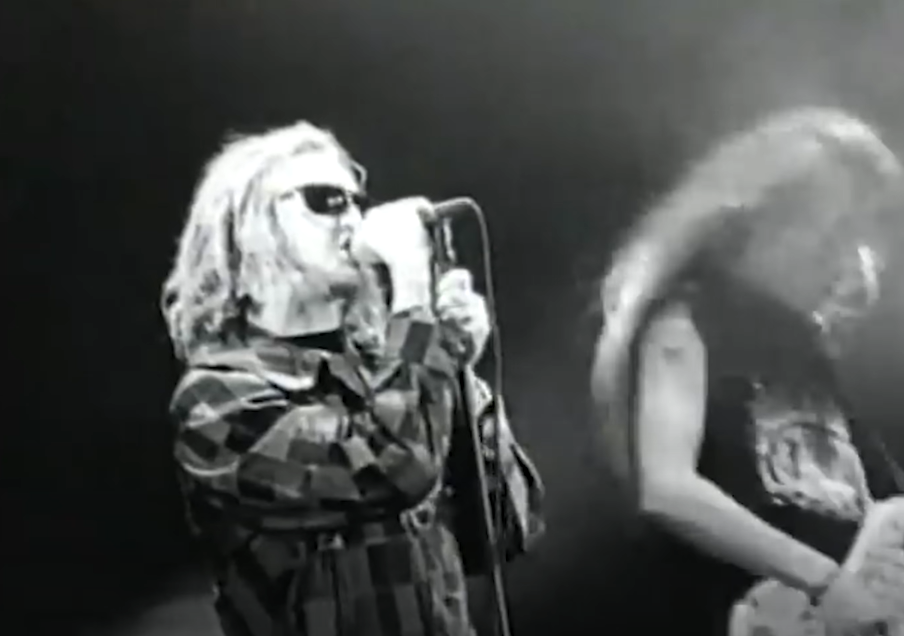 Man In The Box - The Alice In Chains Story, RAWMUSICTV
Man In The Box - The Alice In Chains Story, RAWMUSICTV
38. He Began To Fall Apart
It was also at this point that Staley’s health was visibly deteriorating, and so was his life. His engagement of two years with Parrott suddenly ended. It is unclear if both Staley and Parrott’s substance use was the cause. However, Staley’s abuse the reason that Alice in Chains decided not to tour for Jar of Flies, hoping to keep Staley away from temptation. It wouldn’t last.
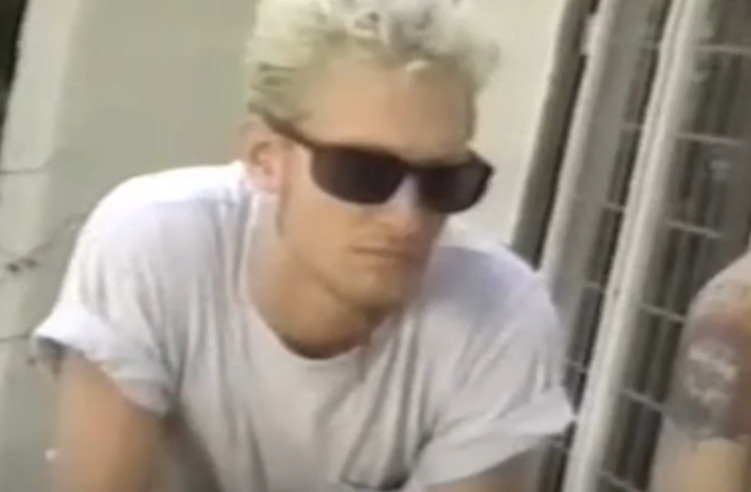 Man In The Box - The Alice In Chains Story, RAWMUSICTV
Man In The Box - The Alice In Chains Story, RAWMUSICTV
39. He Had Help From Friends
Following the release of Jar of Flies, Layne Staley entered rehab and the band went into hiatus. During this time, Staley also joined the band Mad Season at the urging of Pearl Jam’s lead guitarist, Mike McCready. McCready had hoped that giving him work with sober musicians would motivate him to stay so as well. If it worked, it only did for a short time.
 Lugnuts, CC BY-SA 3.0, Wikimedia Commons
Lugnuts, CC BY-SA 3.0, Wikimedia Commons
40. He’d Gone Too Far
By this point in his career, Staley’s drug use and the complications from it were becoming common knowledge, as his body was showing signs of damage. In February 1996, Staley told Rolling Stone, “Drugs worked for me for years, and now they’re turning against me”. He was walking through hell, and he wanted other people to know it.
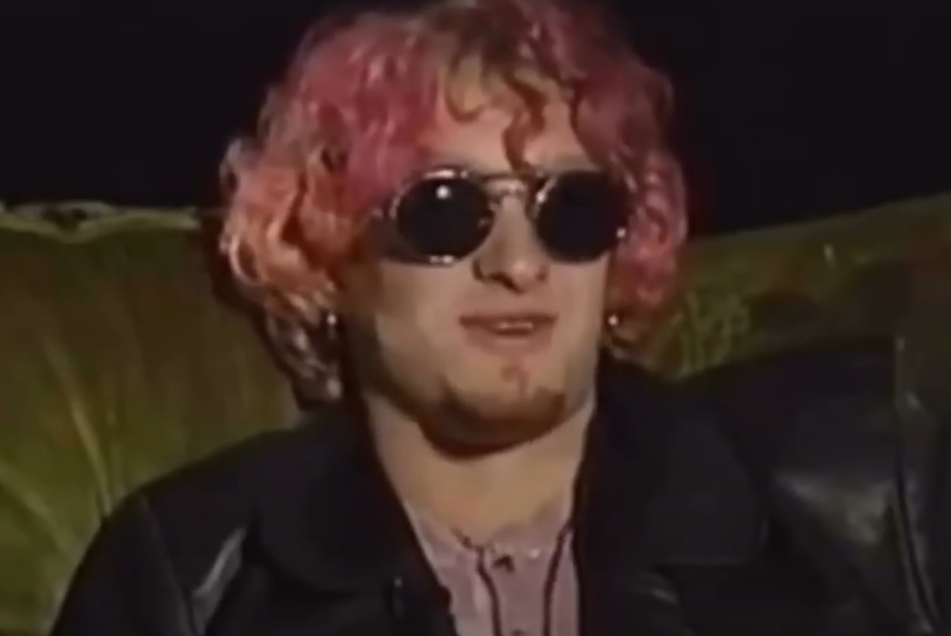 Man In The Box - The Alice In Chains Story, RAWMUSICTV
Man In The Box - The Alice In Chains Story, RAWMUSICTV
41. He Feared Hurting Others
Although Staley could not resist his addictions, he didn’t want his fans to admire his use of illicit substances. He stated, “I didn’t want my fans to think that [they were] cool”. It was one of his greatest pains and disappointments, that he still got fans coming up to him bragging about their substance use.
 Man In The Box - The Alice In Chains Story, RAWMUSICTV
Man In The Box - The Alice In Chains Story, RAWMUSICTV
42. He Wasn’t Done Yet
Despite his struggles, Layne Staley was not completely lost—yet. Staley recorded one more album with Alice in Chains, Alice in Chains. Unfortunately, Staley’s issues stopped the band from, yet again, going on tour. He would make one last performance with Alice in Chains in July of 1996 while the band was touring with Kiss. Things may have turned out differently, if Staley hadn’t received a final blow that he couldn’t come back from.
 Man In The Box - The Alice In Chains Story, RAWMUSICTV
Man In The Box - The Alice In Chains Story, RAWMUSICTV
43. He Couldn’t Cope
In October of 1996, Staley’s former fiancé Demri Parrott succumbed to her own substance misuse-related health issues, and Staley never recovered from her loss. He was put on a 24-hour watch for self-harm.
Mark Lanegan, a friend from the band Screaming Trees, reflected in 2002, “[Staley] never recovered from Demri’s [passing]. After that, I don’t think he wanted to go on”.
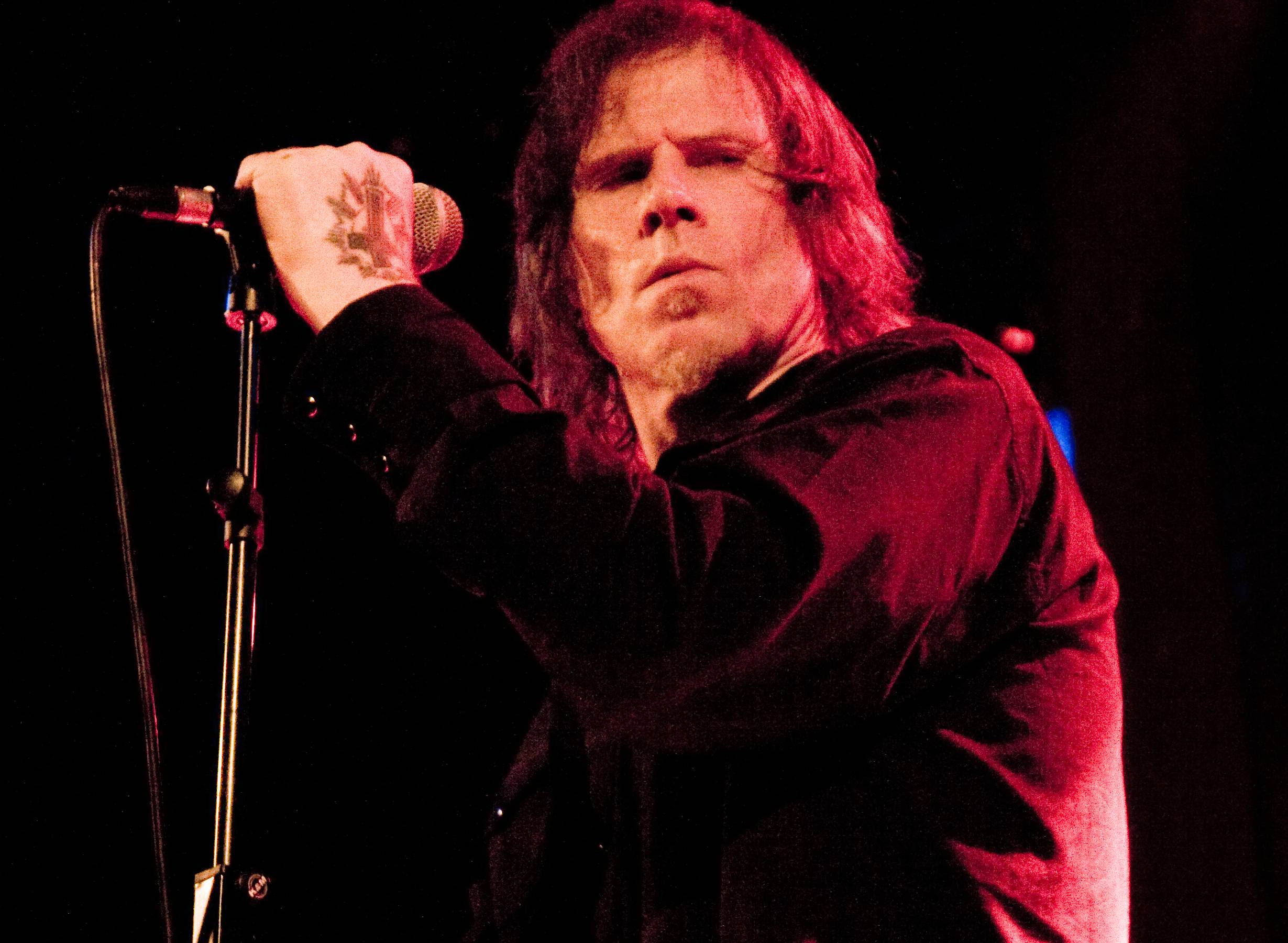 alterna2, CC BY 2.0, Wikimedia Commons
alterna2, CC BY 2.0, Wikimedia Commons
44. He Hid Himself Away
It certainly seemed that Layne Staley had given up fighting his own issues, following the loss of Parrott. By 1998, Staley had retreated into himself. He rarely left his apartment, and he began isolating himself from his friends. Despite this, he did record two more tracks with Alice in Chains in October that year.
His body was failing him; he was dying.
45. He Wouldn’t Accept Help
On April 4, 2002, bandmate Mike Starr visited Staley for Starr’s birthday. At the time, Staley was very sick, however, he refused to call the authorities or allow Starr to call. The pair argued, and Starr eventually left, recalling Staley calling out as he left. What he said was unforgettable.
Staley was saying, “Not like this, don’t leave like this” as Starr left. It would be an action Starr would regret for the rest of his life.
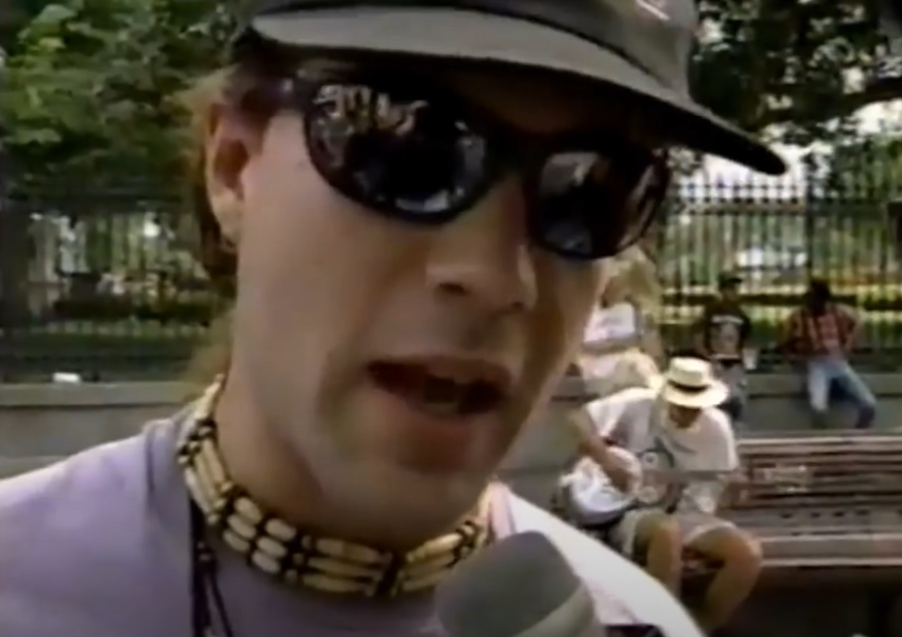 Man In The Box - The Alice In Chains Story, RAWMUSICTV
Man In The Box - The Alice In Chains Story, RAWMUSICTV
46. He Went Quiet
It would be over ten days, on April 17th, before anyone attempted to contact Staley again. His mother arrived at the apartment with the devastating news of Parrott’s brother's passing—but only a deafening silence greeted her. Staley did not answer the door. However, at this time, this behavior was not uncommon for Staley, so his mother left.
However, the chilling truth would soon make itself known.
 The Dark Descent Of Layne Staley (2021 Documentary), RockRealmm
The Dark Descent Of Layne Staley (2021 Documentary), RockRealmm
47. He Began To Raise Concern
Two days later, on the 19th, Staley's accountants reached out to his former manager, Susan Silver, with more unsettling news. They raised red flags, notifying her that no money had come out of his account in two weeks. Silver contacted McCallum, who returned to her son’s apartment one last time. This time, there were some alarming developments.
 The Dark Descent Of Layne Staley (2021 Documentary), RockRealmm
The Dark Descent Of Layne Staley (2021 Documentary), RockRealmm
48. His Mother Was Always There
Finding mail piling up and Staley’s usual silent cat meowing in distress, McCallum called the authorities. Once officers arrived on the scene, McCallum and her ex-husband Jim Elmer finally entered the apartment—and made the most heartbreaking discovery imaginable.
They found that Staley had passed some time ago, due to an overdose
 The Dark Descent Of Layne Staley (2021 Documentary), RockRealmm
The Dark Descent Of Layne Staley (2021 Documentary), RockRealmm
49. He Would Give Forgiveness
It would be eight years before fellow bandmate Mike Starr would confess to being the last person to see Staley before his passing on April 5, 2002. Although Starr was never able to forgive himself for leaving Staley that night, McCallum was firm that neither she, her family, nor Staley would’ve blamed him.
She said, “Layne would forgive you. He’d say ‘Hey, I did this. Not you’”. Tragically, Starr followed in his friend’s footsteps, dying of an overdose in 2011.
50. He Is Remembered
Since his passing, there have been numerous tributes to the life that Layne Staley lived. While his struggles defined his passing, those who loved him most want him to be remembered for who he was instead. He was a talented and emotional man who prospered despite his suffering. That is the tribute that those who loved him most continue to make.
You May Also Like
Devilish Facts About Dimebag Darrell, The Doomed Metal Icon
Iconic Facts About Shannon Hoon, The Star Who Burned Too Bright
Red-Hot Facts About Hillel Slovak, The Original Chili Pepper



